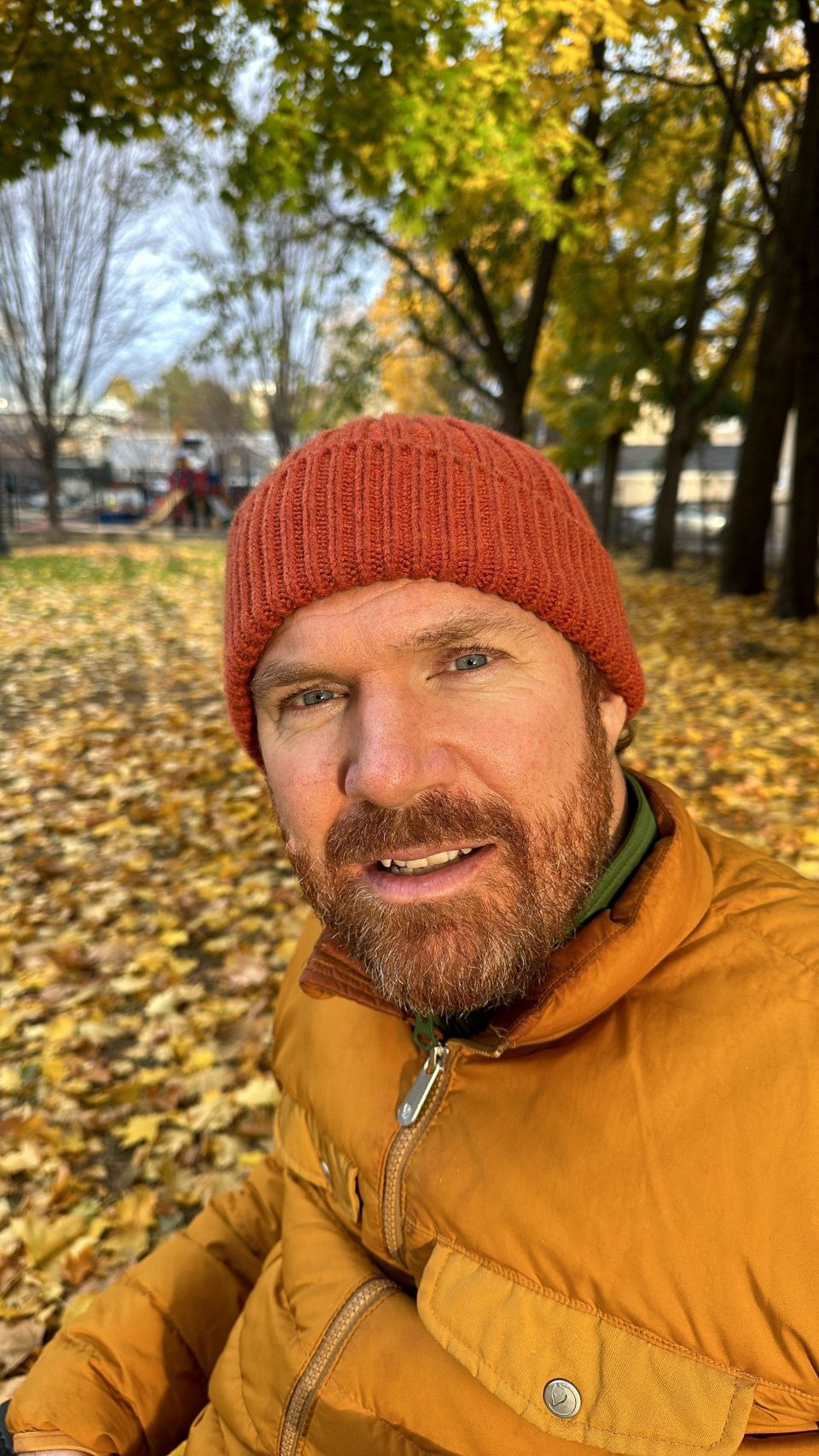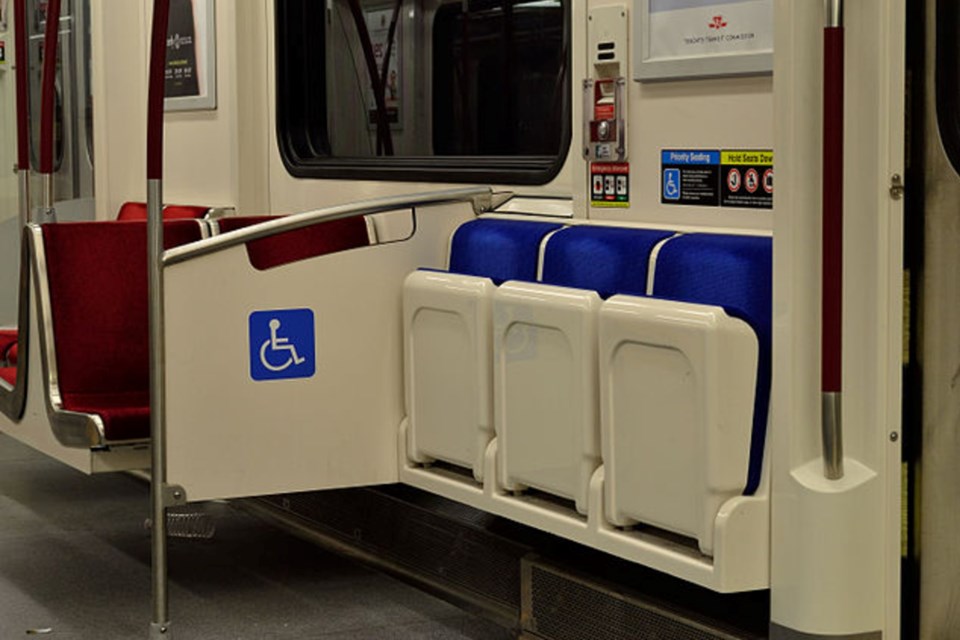In the 23 years he’s been a wheelchair user, Luke Anderson can’t recall many days where he hasn’t encountered a barrier as a person living with a disability in Toronto.
Whether it’s a Kensington Market storefront without an entry ramp, raised seating at a restaurant on Queen, or a Dundas Street café without an automatic door, obstacles come in many forms, he said.
The issue, he argues, is that Toronto has failed to implement provincial legislation to make Ontario barrier-free by January 2025, known as the Accessibility for Ontarians with Disabilities Act (AODA). That deadline has since passed.
“We have these services that city residents and visitors to Toronto can’t access, and had the AODA been enforced and complied with, we wouldn’t have those issues today,” Anderson said.
“These hurdles are occurring every day."
Downtown Toronto is ‘riddled with barriers’
Once an avid cyclist, Anderson suffered a spinal cord injury in 2002 when he crashed while riding on a mountain biking trail. He’s been using a wheelchair to get around the city ever since.
Through his work with the StopGap Foundation — an organization he co-founded that spearheaded the use of brightly-coloured ramps in doorways throughout the city — Anderson recently conducted an accessibility survey with 84 BIAs in the Greater Toronto Area.

Some areas reported that 85 to 90 per cent of their retail spaces had considerable access, while others reported as low as 30 per cent. Across the board, Anderson found just half of the businesses involved in the survey were mostly accessible.
“At the Harbourfront, a lot of those locations are at ground level, so they had decent access,” he explained.
“But in other parts of the city, you see that number decline drastically. Yorkville, for example, is a neighbourhood riddled with barriers in those retail spaces.”
He said it is particularly frustrating when he sees a building that has been renovated, without consideration for accessibility.
“I shake my head, particularly when I recognize buildings that have undergone extensive renovations and [there are barriers when] they open their doors again.”
The issue, Anderson said, is enforcement. “There’s some serious gaps in the way that we enforce accessibility, and there isn’t much protocol and policy with furniture or how a restaurant outfits their premises."
Anderson wishes more specific detail around how to enforce regulations had been incorporated into the AODA — which was passed unanimously in 2005. Considered groundbreaking at the time, the provincial government said the AODA would make the province fully accessible.
Anderson said it is not just Toronto’s private businesses that aren’t meeting accessibility requirements, but the city’s public services, too.
“We’ve got public beaches and water taxis that aren’t accessible, or TTC stations that still aren’t equipped with elevators,” he said. “I don’t know if we’ll ever experience a barrier-free Ontario at the pace things are going.”
In an email to TorontoToday, the TTC said it remains committed to making its system fully accessible.
“That commitment has never wavered,” the statement reads. “While we are making progress, we certainly understand the frustration around not meeting the deadline — and we apologize to our customers for that. It’s why we committed to providing regular updates to our Board regarding the status of these projects.”
The TTC said 57 of its 70 stations are accessible today. Of the remaining stations, construction is underway, or contracts have been awarded at all of them.
“With the full conversion of our streetcar fleet a few years ago, we made all TTC vehicles accessible,” the transit commission wrote.
Promises made, but not kept
David Lepofsky, long-time disabilities advocate and chair of the AODA Alliance, is asking all Ontario political parties to sign their Accessible Ontario Pledge ahead of the upcoming snap election.
The pledge calls on the future Premier to meet with the AODA Alliance periodically, remove barriers in the healthcare and education systems and revamp the Ontario Building Code — through which much of the AODA is implemented — to better address accessibility.
Governments on both sides of the aisle have failed to meet the alliance’s demands for years, according to Lepofsky, and he hopes the pledge will reignite the conversation.
So far, NDP leader Marit Stiles and Green Party leader Mike Schreiner have agreed to the “vast majority” of the Accessible Ontario Pledge, Lepofsky said.
“We have not heard back from the Liberals and Conservatives yet, but we’re pushing them,” he noted. “We’re non-partisan; we don’t tell anyone who to vote for. ”
Speaking on downtown Toronto issues, Lepofsky noted there’s a tremendous amount of work that needs to be done to support the nearly 500,000 locals who live with a disability.
He recently expressed his disappointment over the Toronto District School Board’s decision not to explore an alternative dispute resolution mechanism for parents of children with disabilities who are unsatisfied by classroom accommodations their children have been offered.
Lepofsky’s frustrations have also boiled over with inaccessibility concerns at newly built sites like the courthouse on Armoury Street and the Women’s College Hospital on Grenville Street, as well as area hotels that still don’t use braille in their elevators or on the room numbers, to name a few.
He said that the enforcement of accessibility standards often falls to advocates like him, due to the lack of government regulations.
“The government doesn’t tell obligated organizations what they have to do specifically, so they leave it to us to fight one barrier at a time — which is a lot,” he said.
“When the government announces another hospital, or another public transit line, what that means to us is another piece of infrastructure built with public money that will end up full of barriers because they don’t set the right requirements.”
Barriers are ‘totally solvable’
Serving on the city’s accessibility advisory committee, Anderson admitted the ongoing fight to advocate for people like him can be frustrating.
He has been pleased, however, with the work that’s been accomplished on improving pedestrian traffic and accessible practices around construction zones in Toronto.
“We talked about construction and situations that are super problematic where a sidewalk might be ripped up and then there’s no ramps to get down and off the sidewalk,” he said. “A lot of issues were flagged with construction zones, but it has gotten a little better since it was on the agenda last year.”
By supporting disability-led companies and investing in barrier-free amenities, both Anderson and Lepofsky feel confident the city would see significant boosts in its economy, as well as its tourism sector.
“Toronto wants to be a big international tourism centre, but compared to any major American cities, we are not a great tourist destination for [people with disabilities]. So, there’s lost revenue and tax revenue because we have not effectively tackled disability poverty and removed these barriers,” Lepofsky said.
“This hurts everyone, but it’s a totally solvable problem.”
